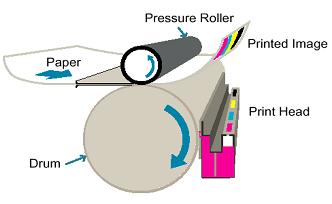INK-JET TECHNOLOGY
A joint experimental and numerical simulation of the Thermo-fluidic modeling as occurs in a solid ink-jet printer is proposed . It is aimed at better understanding of the physical processes that occur in such printers. The experimental effort is aimed at quantitative measurement to determine key parameters and key variables that should be included in the model. The types of measurements include surface thermal resistance and advancing and receding contact angles. How the type of surface (metal, viton), surface roughness and oil loading affect the surface thermo-fluidic properties would be investigated. Experimental observation of drop impaction of melted inks on solid surfaces would also be done. System-level work on drawback and inter-color mixing could also provide inputs to the effort. Experiments would be done using sample waxes and industrial inks.

Finally, integration of the experimental work with the modeling would lead to a fundamental understanding embodied in a model and the type of systematic measurements that are required to do system design in a way to minimize or avoid the types of failure modes often observed at various stages of PIJ product programs.
Tasks: (a) Development of a computational technique to simulate the impaction and solidification of multiple droplets on a solid surface. (b) Development of a testing procedure to experimentally determine the contact angle of the wax droplets as used in the ink-jet printer systems. (c) Conduction of detailed numerical and experimental investigation of the multiple droplet impact on surface to understand the physical processes that are involved and influence of various parameters on the merging and draw back of droplets. (d) Development of general correlations for the onset of draw back in solid ink printers.
- PowerPoint Presentation on InkJet Printing
- PowerPoint Presentation on ThermoFluidics of InkJet Printing
